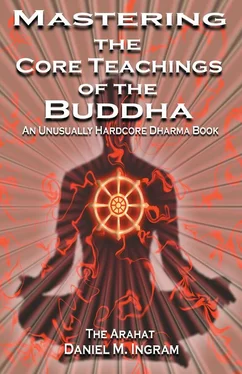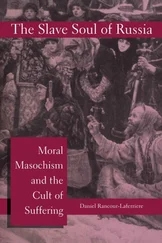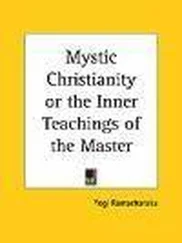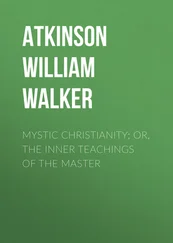Daniel Ingram - Mastering the Core Teachings of Buddha - An Unusually Hardcore Dharma Book
Здесь есть возможность читать онлайн «Daniel Ingram - Mastering the Core Teachings of Buddha - An Unusually Hardcore Dharma Book» весь текст электронной книги совершенно бесплатно (целиком полную версию без сокращений). В некоторых случаях можно слушать аудио, скачать через торрент в формате fb2 и присутствует краткое содержание. Год выпуска: 2009, ISBN: 2009, Издательство: Aeon Books, Жанр: Старинная литература, на русском языке. Описание произведения, (предисловие) а так же отзывы посетителей доступны на портале библиотеки ЛибКат.
- Название:Mastering the Core Teachings of Buddha - An Unusually Hardcore Dharma Book
- Автор:
- Издательство:Aeon Books
- Жанр:
- Год:2009
- ISBN:9781904658405
- Рейтинг книги:5 / 5. Голосов: 1
-
Избранное:Добавить в избранное
- Отзывы:
-
Ваша оценка:
- 100
- 1
- 2
- 3
- 4
- 5
Mastering the Core Teachings of Buddha - An Unusually Hardcore Dharma Book: краткое содержание, описание и аннотация
Предлагаем к чтению аннотацию, описание, краткое содержание или предисловие (зависит от того, что написал сам автор книги «Mastering the Core Teachings of Buddha - An Unusually Hardcore Dharma Book»). Если вы не нашли необходимую информацию о книге — напишите в комментариях, мы постараемся отыскать её.
Mastering the Core Teachings of Buddha - An Unusually Hardcore Dharma Book — читать онлайн бесплатно полную книгу (весь текст) целиком
Ниже представлен текст книги, разбитый по страницам. Система сохранения места последней прочитанной страницы, позволяет с удобством читать онлайн бесплатно книгу «Mastering the Core Teachings of Buddha - An Unusually Hardcore Dharma Book», без необходимости каждый раз заново искать на чём Вы остановились. Поставьте закладку, и сможете в любой момент перейти на страницу, на которой закончили чтение.
Интервал:
Закладка:
He also adds the drum of the Deathless, and here we have hints of an Immortality Model or an Extinction Model, and while formally Buddhism would reject both of these associations, aspects of both show up often in the texts anyway. There is also a Transcendence Model, as he says he is unsullied by all things, and also a Specific Knowledge Model, as the Buddha says he is a knower of all. In short, he says he has accomplished something remarkable, and asserts that he is going to go tell others how to do exactly the same thing he did, or is he?
The question of how the Buddha’s realization relates to what he was trying to teacher others is a complex one. There are numerous passages where he says he is quite different from and superior to all other enlightened beings, and draws a clear line between himself and arahats.
Thus, we have to look carefully at what his claims about himself have to do with others, and I devote the whole next chapter to this complex issue. Suffice to say, the problem comes in when the ideals the Buddha discusses as applying to himself, however mythologized we think they are, are applied without careful investigation to enlightened beings of theoretically inferior degree. Then there is the slippery question of the Tibetans who purport to produce full Buddhas in one lifetime…
Back to the issues of whether or not enlightened beings have a special presence. I have seen examples of both, though I suspect that in most cases their presence was largely that way before they started doing spiritual practice. Many people who have asked me questions about practice over the years have hesitantly asked me if there was something remarkable about my presence or how I was able to keep my
realizations hidden at work. I am both sorry and happy to report that I have no problems in this regard at work and as far as I can tell have 305
Models of the Stages of Enlightenment
nothing whatsoever that is unusual about my presence that wasn’t there long before I got into all of this, other than the confidence and passion with which I speak on the dharma. In short, the physical models and radiance are just nice propaganda and another trap that people fall into, both in their own practice and when evaluating the possible level of realization of others.
THE KARMA MODELS
Karma models involve the promise that somehow realization
eliminates, exhausts, cancels out or moderates the forces of causality that would cause bad things to happen to the realized being. Karma involves action and its consequences, and in its simplest form is essentially the statement that causes lead to effects in a lawful way. The subject is imponderable, as the forces and factors involved are so vast and complex that no mind can fully comprehend them. That said, many models and Buddhist ideals subtly or overtly present models of awakening that promise some sort of relief or freedom from adversity.
However, if we look to the life of the Buddha, who by definition is as enlightened as it gets in Buddhism, lots of bad things happened to him, at least according to the texts. He had chronic headaches and back pain, got illnesses, was attacked by bandits, people tried to kill him, his own order broke into warring factions, people harassed him, and so forth and so on. Thus, it is clear that even the Buddha was not free from the laws of karma, and so it would seem naïve to assume that we were also.
However, the karma models raise an interesting question, that of the timing of the fulfillment of the promises of enlightenment and what this has to do with death. The Theravada claims that the moment of complete freedom from suffering is at the death of an arahat or Buddha, as it is only then that there is no more coming into further birth and there is the complete cessation of the senses that cause pain and discomfort. The Tibetans would disagree, focusing on the perpetual life or continued series of rebirths of a Buddha or Bodhisattva throughout time to help awaken other beings. These conflicts bring us to other models, but in fact are paradoxes created by misperception.
However, the karma models are not entirely junk. By seeing each thought, state and emotion as it is, there is an increased ability to simply 306
Models of the Stages of Enlightenment watch these arise and vanish on their own, thus allowing for the causal force of them to not wash through to the future without some moderation of intelligence and wisdom. In this way, past causes, habits, tendencies and the like can be mitigated through clear seeing, and the actions we take based on these that create future causes can be done with more awareness, clarity, and a broader, more inclusive perspective.
This is not the same thing as eliminating all “negative” karma, but it is practical, realistic and verifiable, and thus represents the grain of truth found in the Karma Models.
THE PERPETUAL BLISS MODELS
Perpetual Bliss Models focus on enlightenment bringing on a state of continuous happiness, peace, joy, or bliss. These are commonly found in Hinduism, though they are in full force in Buddhism and other traditions as well, e.g. Christianity’s “the peace that passes all understanding.” Buddhism often describes Nirvana (Nibbana) as synonymous with the highest happiness and the end of suffering, and this end of suffering is the natural corollary of the Perpetual Bliss Models. Perpetual Bliss Models and their corollaries are so pervasive in the world of awakening as to be a central, nearly unassailable tenant of most people’s core beliefs. I am sorry to say, they need serious revision.
The first point is that about impermanence. Bliss, peace, happiness, as well as their counterparts pain, chaos, and misery, are all transient phenomena, subject to conditions, arising and passing like the weather.
As Zen says, the ten thousand joys and the ten thousand sorrows march through our lives according to the laws of reality that have always been in place. This returns us to the great question of realization: does realization change things or does realization reveal how things always were? I advocate a modified version of the latter view, both for practice and for having sane models, but the dogma and those selling something often stray into the promises of a radically different and better existence.
The standard Buddhist argument is that by removing the condition, namely ignorance or misperception, the suffering caused by this condition is also removed. The question then is how much suffering is caused by that particular condition and how much is caused by just being alive. I assert that most of our suffering is caused by simply being alive, but must concede that there is something about changing 307
Models of the Stages of Enlightenment
something in the relationship to the ordinary facts of life and humanity that does help, and why I am so reluctant to admit that there is some sort of peace that comes from realization is a question I am still looking into. While I strongly believe that there are practical reasons not to sell things in this way, I suspect that some residual quirk of my personality is also at play here, and you may have already come to that conclusion.
The other side of the Perpetual Bliss Models is the notion that somehow one will enter into a permanent jhanic state, such as the 4th jhana or some sort of Nibbanic jhana. These versions of the bliss models imply perfect, continuous concentration untouched by
circumstance or enhanced by some sort of inborn wellspring of jhanic qualities. As noted above, all the concentration states are temporary, not related directly to realization, attained both by some who are enlightened and some who are not, and thus are a false promise.
However, as so many people get a taste of jhana and are sure this must just get better and more continuous as they progress, they end up cultivating these states again and again and get nowhere in insight practice. Further, why would someone who was hanging onto a bliss model want to look into suffering? They don’t, and so the chances of them coming into real insight territory or handling the Dark Night well are slim. Now, it is true that there is some sort of relationship between the perspective on things that occurs in the first four jhanas and the four paths, and the panoramic perspective of both the fourth samatha jhana and the panoramic perspective of arahatship share some positive aspects in common, but they are not the same thing, and even mentioning these patterns and parallels is dangerous, as it can cause a lot of misguided effort and assessment of where people are on the path. I think that this is a good place to introduce the Tibetan concept of the Three Kayas, as it has some useful aspects that help make sense of these things.
Читать дальшеИнтервал:
Закладка:
Похожие книги на «Mastering the Core Teachings of Buddha - An Unusually Hardcore Dharma Book»
Представляем Вашему вниманию похожие книги на «Mastering the Core Teachings of Buddha - An Unusually Hardcore Dharma Book» списком для выбора. Мы отобрали схожую по названию и смыслу литературу в надежде предоставить читателям больше вариантов отыскать новые, интересные, ещё непрочитанные произведения.
Обсуждение, отзывы о книге «Mastering the Core Teachings of Buddha - An Unusually Hardcore Dharma Book» и просто собственные мнения читателей. Оставьте ваши комментарии, напишите, что Вы думаете о произведении, его смысле или главных героях. Укажите что конкретно понравилось, а что нет, и почему Вы так считаете.












